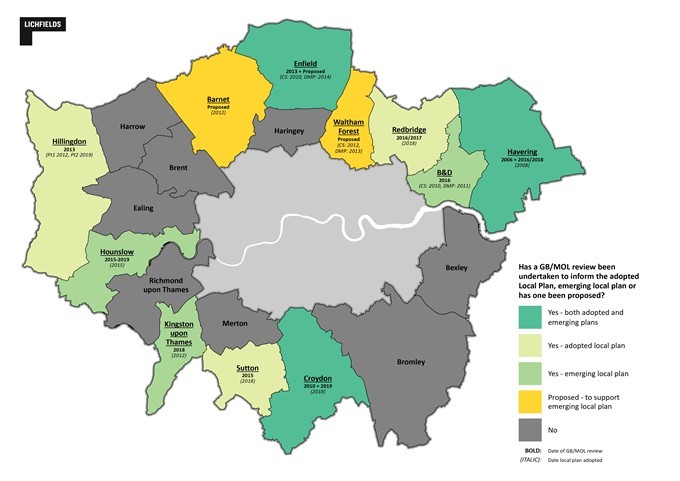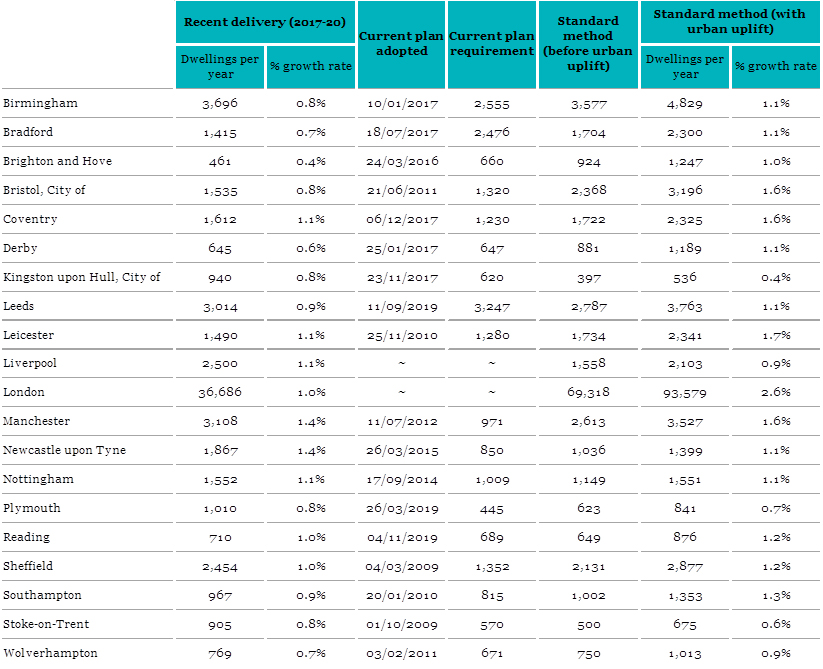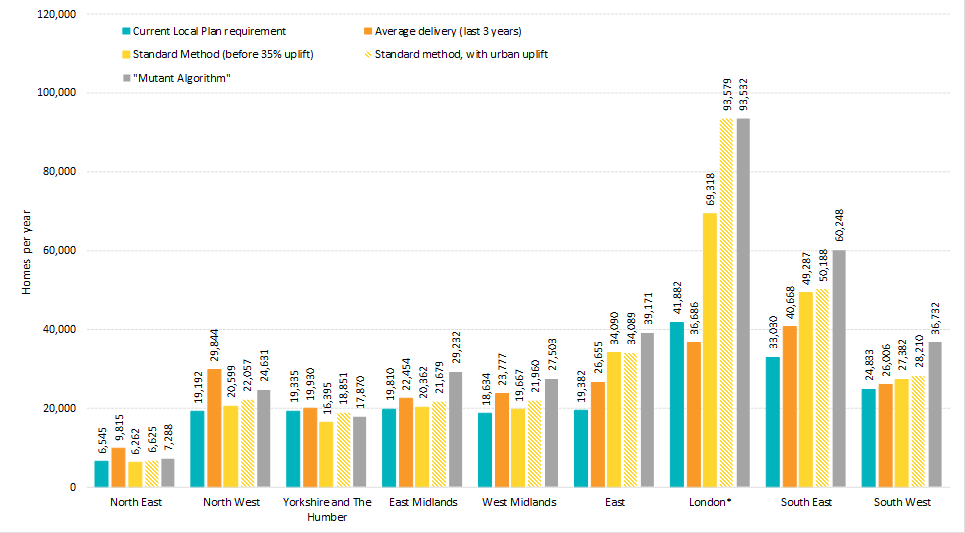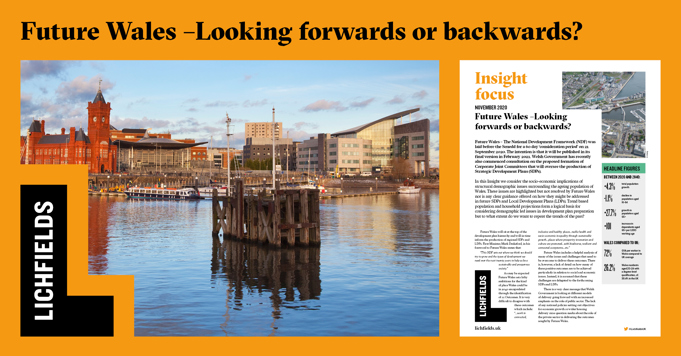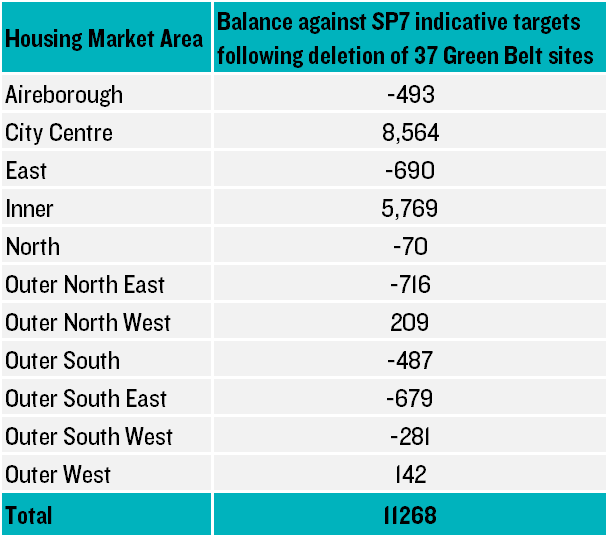After what can only be described as an eventful year for Londoners working in planning and development, progress on the new London Plan had been noticeably absent. That was until 9th December, when the Mayor published a letter addressed to the Secretary of State (S0S), setting out his intention to formally approve his final version of the new London Plan.
Within a fortnight the Mayor has indeed approved his draft London plan – on the day envisaged in his letter of 9th December – and including most of the further changes that were put forward by the SoS the day after receiving the Mayor’s letter.
And while the SoS has at least six weeks to consider his position, it seems likely that approval to publish the London Plan will follow swiftly.
This blog provides an overview of how the Plan has changed in response to the directions.
Background
At the time of the Mayor’s 9th December letter, neither a final version of the Plan nor the Mayor’s most recent revisions had been made public by either party. Then, within a matter of hours of receiving the Mayor’s letter, the SoS broke his silence by responding and setting out yet further directions for the Mayor to amend the new London Plan, indicating that there had been collaboration and that the Mayor’s letter was issued in order to poke the Government into action.
The correspondence confirmed that the Mayor had submitted a further amended version of the new London Plan to the SoS on 21 August, in response to the directions made by the SoS back in March 2020.
Annexe 1 of the 10 December letter sets out where the SoS accepted the Mayor’s proposed rewording of the Plan in line with the directions made in March, alongside the parts where he disagreed. Reading through these, it becomes apparent that the Mayor had not taken on board a number of the directions. Annexe 2 sets out two additional directions to the initial eleven, relating to the redevelopment of Industrial Land in areas constrained by Green Belt, and entirely new changes to the Mayor’s tall building policy.
Collectively, the changes directed do alter the strategy to that which was intended by the Mayor when the draft Plan was published in 2017. Not only might we see some development of a different scale to that the Mayor intended, but also in locations and on types of site that the Mayor sought to remain off limits.
To provide an overview of what this means, we have summarised below how the SoS’s latest directions have changed the Plan – and where the Mayor has not accepted the changes in full.
1. Green Belt and Metropolitan Open Land
As expected, the Mayor has – for a second time - been directed to amend the Plan’s Green Belt Policy G2, effectively bringing this in line with national policy, removing the blanket ban on development on London’s Green Belt and Metropolitan Open Land (MOL).
The directed changes largely mirror paras 84 and 85 of the NPPF (the 2012 version, which the Plan has been assessed against), which require development proposals that would harm the Green Belt to be refused except where very special circumstances can be demonstrated. The directions also encourage opportunities for the enhancement of the Green Belt where this can provide appropriate multifunctional beneficial uses for Londoners.
Policy G3 regarding MOL has also been diluted, with a similar redaction of the previous text that explicitly stated that development proposals that would harm MOL should be refused.
Changes to this particularly contentious area of planning policy will likely draw a mix of reactions. Not only has this required the Mayor to dilute his 2016 manifesto pledge to protect London’s Green Belt and MOL; some outer London Boroughs may now find themselves under pressure to release Green Belt in order to meet the new housing targets, in situations where closer scrutiny of housing land supply reveals they do not have sufficient deliverable and developable capacity without doing so (a topic explored in our recent Insight report:
Mind the Gap). Equally, the flexibility will also allow more ambitious boroughs to consider the release of sites in sustainable locations that do not perform well against the NPPF’s criteria for designation. Our
previous research on London’s Green Belt and MOL revealed that 11 boroughs had already undertaken Green Belt reviews independently of the GLA.
With this change in policy approach, it does invite the question over whether the Mayor will continue to devolve Green Belt reviews to individual Boroughs or seek to overlap some kind of coordinated approach, following previous recommendations from the Examination in Public (EiP) Panel last December, which had suggested that a strategic and comprehensive review of London’s Green Belt should be undertaken to establish its potential for sustainable development. On balance, the former seems more likely, with the latter being a can that will be kicked down the road for the next London Plan, which will need to grapple with a sky-high housing need figure of 93,500dpa (as explored in our recent blog on the
Standard Method).
Figure one: Green Belt/ MOL Reviews undertaken by Outer London Boroughs.
Source: Lichfields
2. Land for industry, logistics and services to support London’s economy
Perhaps in light of the recent political backlash regarding other areas of planning reform (in particular, the changes to the Standard Method), the SoS had called on the Mayor to provide boroughs constrained by Green Belt and MOL with a degree of freedom to consider the release of other designated land instead, with his latest directions requiring additional changes to the Plan’s policies on Strategic Industrial Land (SIL).
The Mayor was directed to further amend para 6.4.8, supporting text Policy E4, to include the following line:
“In exceptional circumstances when allocating land, boroughs considering the release of Green Belt or Metropolitan Open Land to accommodate housing need, may consider the reallocation of industrial land, even where such land is in active employment uses”.
He states that this will “provide boroughs in the difficult position of facing the release of Green Belt or Metropolitan Open Land with a greater freedom to consider the use of Industrial Land in order to meet housing needs.”
The SoS puts this down to the “profound impact Covid-19 is having on London, and other towns and cities”; however, his reasoning goes no further in explaining the link, or why this is the only Policy area to have been affected by the challenges of the pandemic.
The March directions had already sought a significant watering down of Policy E4 and Policy E5 and required the Mayor to drop the ‘no net loss’ principle for sites designated as SIL/Locally Significant Industrial Sites (LSIS). The change would provide boroughs with a much greater degree of flexibility as to how proposals for alternative uses for these sites are to be determined, and potential for such designations to be reviewed through a plan led approach. Evidently the Mayor has already once declined to make these changes, as these had been highlighted a second time around.
The SoS is clear that the emphasis should be on ensuring boroughs “provide” sufficient land rather than to “retain” at all cost. The Plan continues to support opportunities for intensification and co-location of uses, however, the SoS’s directed changes actively encourage boroughs to assess the release of industrial land for alternative uses where vacancy rates are “well above the average”, where possible substituting with “alternative locations with higher demand for industrial uses”.
The EiP Panel had previously noted that that the vacancy rate of existing industrial land and premises in most boroughs is less than 5%, suggesting this sector was operating efficiently but with little capacity to meet future demands. The loosening of Green Belt restrictions may provide opportunities for SIL to be substituted outside of London’s built up areas; however, recent trends have highlighted growing demand for storage and warehousing within and close to the CAZ.
Given the current buoyancy of London’s market for industrial land, its future safeguarding and potential release for other uses will now be largely reliant on wider market factors and the viability of individual sites.
The Mayor has not accepted the wording in the direction and para 6.4.8 has been submitted with text in red inserted in place of the SoS’s wording;
“Where industrial land vacancy rates are currently above the London average, boroughs are encouraged to assess whether the release of industrial land for alternative uses is more appropriate if demand cannot support industrial uses in these locations. Boroughs proposing changes through a Local Plan to Green Belt or MOL boundaries (in line with Policy G2 London’s Green Belt and Policy G3 Metropolitan Open Land) to accommodate their London Plan housing target should demonstrate that they have made as much use as possible of suitable brownfield sites and underutilised land, including – in exceptional circumstances – appropriate industrial land in active employment use. Where possible, a substitution approach to alternative locations with higher demand for industrial uses is encouraged”.
The proposed wording does not contradict the SoS’s direction; but emphasises the need to make reference to other policies in the Plan and reflects para 137(a) of the current National Planning Policy Framework (albeit the draft Plan must be consistent with the NPPF 2012). It seems more likely than not that the Mayor’s version of amended para 6.48 will be acceptable to the SoS.
3. Optimising density
The change in approach of the new London Plan to determining appropriate densities for sites will be familiar, notably the scrapping of the density matrix and the formalising of the established design-led approach to development.
Whilst generally supportive of the approach, the SoS once again directed the Mayor to reword Policy D3 so as to ensure that in optimising site capacity, development is of the most appropriate form and land use for the site and location.
The Mayor had also been directed to add an additional paragraph D3 (B), clarifying that higher density developments should be promoted in locations that are well connected to jobs, services, infrastructure and amenities, by public transport, walking and cycling. Outside of these areas, incremental densification should be actively encouraged.
The approach largely echoes the Government’s White Paper which called for “
more homes at gentle densities in and around town centres and high streets, on brownfield land and near existing infrastructure”. With possible divergence in opinion as to what might constitute ‘
gentle’, some boroughs may well seek to limit development in some lower density areas. However, the GLA will likely expect this to be determined in line with its
(draft) SPG ‘Quality Homes for all Londoners’, which seeks to ensure site capacity is determined in response to the local context.
4. Tall buildings
Linked to the above, the SoS’s additional directions under annexe 2 of his 10th December letter called for amendments to Policy D9 regarding tall buildings. The Mayor has amended the policy in line with this direction. The effect is a lower default threshold definition for tall buildings where no local definition is in place, reducing it from 25m in height in the Thames Policy Area and 30m in height elsewhere in London, to just 6 storeys or 18 metres across the entire Greater London area.
Essentially, unless a higher threshold has been set locally, the Plan’s tall buildings policy will be engaged for any proposals over 6 storeys tall, providing greater control over such development proposed in lower to mid-rise areas of London where local Plans are silent on the height threshold.
The accompanying letter from the SoS acknowledged that there “is clearly a place for tall buildings in London, especially where there are existing clusters. However, there are some areas where tall buildings don’t reflect the local character”.
Taken with the directions on optimising density, these changes will give boroughs more control over applications for taller, higher density developments – perhaps in part to appease some outer London boroughs, such as Hillingdon, Bexley and Richmond, which had previously called for an approach that was more sensitive to local context. Whilst these changes may bring London closer in step with the SoS’s aspirations for “gentle density”, there is a risk this may reinforce existing patterns of low density urban form, reducing the opportunities to optimise the development potential on some otherwise sustainable sites.
5. Parking
Following his previous directions on this matter, the SoS had again directed changes to the maximum residential parking standards in Table 10.3, introducing a more nuanced approach for development in outer London. Where Table 10.3 provides a range, development proposals that are higher density or in more accessible locations should apply the lower of the threshold. In addition to this, boroughs are given some flexibility to apply higher standards in areas of outer London with the lowest PTAL rating, where there is clear evidence that this would support additional family housing (3+ bedrooms).
For retail parking standards, the Secretary of State also maintained that boroughs may consider alternative standards in certain locations, where it can be demonstrated that the standards in Table 10.5 would undermine town centres first approach to retail development, or significantly undermine the viability of mixed-use redevelopment proposals in town centre locations.
With the Mayor accepting these amendments, it will ultimately fall to the boroughs as to how these standards will be applied. In some instances, this may assist schemes in areas with a lower PTAL, whilst also supporting the viability of mixed use redevelopment on existing retail sites and schemes and in town centre locations.
Concluding thoughts
A comparison of the SoS’s latest directions against those published in March shows that, despite the ‘constructive’ conversations his officials may have had with colleagues at the GLA, the Mayor was initially unwilling to concede on a number of key policy areas, as directed in March.
The changes made in response to the directions will hand a greater degree of flexibility back to boroughs in how they plan for development, whilst decisions over how land is best utilised will be more market driven. Reflecting on the priorities and challenges of the Government’s wider agenda for planning reform, the SoS’s priorities clearly lie with delivering housing, though there is also an attempt to balance this message with assurances over design quality and the impact new development may have on lower density outer boroughs constrained by Green Belt.
On the one hand, this may support boroughs in delivering more homes, giving them greater freedom over the types and locations of sites that are considered appropriate for development. On the other, some of the changes – notably those aimed at optimising site capacity and - may reinforce existing development patterns, particularly where the surrounding context of townscape and urban character are lower in density or may be constrained in other ways.
With London delivering well below its identified housing need (now 93.5K per annum), this will almost inevitably result in the release of some sites within protected land categories, namely Green Belt, MOL, and designated Industrial Land. However, the extent to which this occurs will depend on a range of factors, not limited to the demand for alternative uses, proximity to existing infrastructure, and the viability of sites, particularly given the significant costs and limitations that often come with brownfield sites. Planning decision makers will no doubt also have regard and attach weight to the economic impact this may also have on jobs, affordable employment space, access to supply chains, storage and distribution.
The Mayor faced the difficult choice of making some relatively major concessions to his strategy or risk not getting his version of the London Plan adopted in time for the (already once delayed) Mayoral elections.
On 16 December the SoS, in his Housing Update Written Statement alluded to the sudden change in pace, saying “we expect to agree the London Plan with the Mayor early in the new year which will set his plan for, amongst other things, meeting London’s housing need. This will support greater ambition in London”.
Given the prevailing uncertainty stemming from the pandemic, a post-Brexit trade deal, and the government’s proposals for wider radical reform of the planning system, pragmatically, the Mayor has accepted the vast majority of changes directed, recognising the importance of having an adopted Plan in place. As his most recent letter to the SoS says:
“I welcome your sense of urgency in getting my London Plan published and acknowledgement that this would help families and businesses in London. These reflect my own concerns as I have set out in correspondence to you on a number of occasions since March 2020. Publishing the London Plan will also provide much needed certainty to landowners and developers at this difficult time for the whole country.”
The Mayor stuck to his intended formal approval date of 21 December; there could still be a new London Plan 2020, but the new London Plan 2021 sounds more realistic.
Mayor of London, Letter to the SoS 9 December 2020MHCLG, Letter to Mayor 10 December 2020Annex A Changes to fulfil Directions 10 December 2020Annex B Further Directions 10 December 2020
Image credit: GRID architects for Bellway Homes
